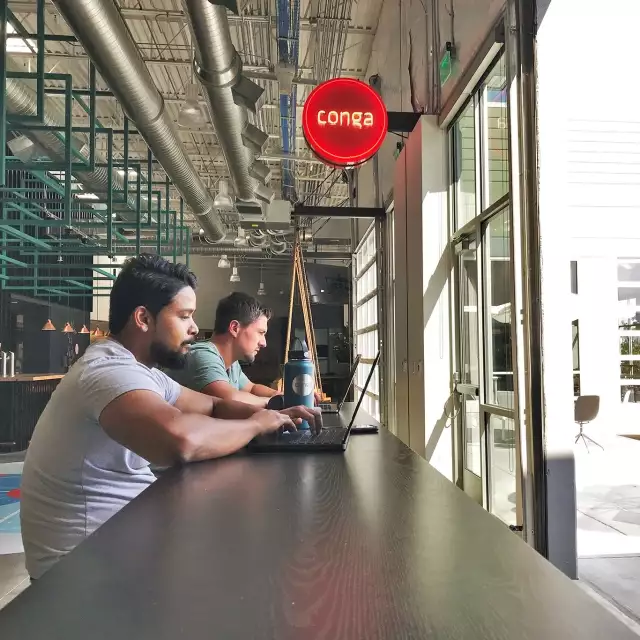
How the healthcare industry is evolving with Werner Boeing, CEO at evisory

The healthcare industry is constantly evolving, and changes have never come as rapidly as they are right now. As the CEO of digital healthcare advisory firm evisory, Werner Boeing has a unique perspective on the transformation challenges facing the companies in the healthcare space. Following are some key takeaways from a recent conversation with Conga leadership.
Cross-industry experience can help drive transformation
Many believe that, because healthcare is so unique, transformation drivers that may be effective in other industries aren’t as successful in healthcare. However, after working in a wide variety of industries, Werner disagrees.
“In my experience, every industry has similar problems and similar opportunities. But the time horizons for digital transformation are different in different industries,” he says. “For example, the automotive industry had their digital revolution earlier, and they had to manage that in order to stay competitive. Pharmaceutical companies, on the other hand, were successful for a long time with a traditional approach. But eventually, they had to look to other industries to find new ways of doing things.”
The challenge of measuring healthcare outcomes
As healthcare systems are transforming, they’re becoming more outcome-oriented and patient-centric. This requires new capabilities to empower transformation—and there are significant gaps between what’s needed and the present state.
“Everyone agrees on the move to patient-centered care that targets the individual and provides the help they need,” Werner says. “We also need to measure its efficacy, and reward outcomes rather than input. But agreeing on what we all want is the easy part.”
He explains that the capabilities needed to measure outcomes in a healthcare setting are complex, because of human individuality. If you get treatment for a condition, it’s still your choice whether or not to do things like exercise, eat well, and follow your prescription regimen.
“What we need are data capabilities and the ability to model—as well as more of a B2B mindset,” he continues. “We need to think about how to structure contracts with agreed-upon KPIs that can be used to measure outcomes. And how do we monitor progress toward those KPIs? We need to move away from the yearly meetings where we talk about how much product you’ve delivered, and instead create an ongoing engagement focused on outcomes.”
Contract flexibility enables greater collaboration
In many industries, complex ecosystems have begun to play a more important role. That’s true in healthcare, as well—and it’s changed the type of deals that are required.
In healthcare, for example, drugs are needed for a variety of usages from pain management to treatment. These drugs need to be developed, but they also need to be delivered to patients and then administered. All of that may require both a drug delivery system and an algorithm to define doses. In addition, we might need to look dynamically at the body’s response and adjust doses of a given therapy. To make this system work, different parties must come together and gain important insights that can help to define better, more useful metrics.
“It’s difficult to bring this together contractually. But even beyond the legalities, it’s challenging to monitor what’s happening on the operational side,” Werner says.
The ecosystem can be viewed as a metaphor for our need to solve more complex problems and bring different parties together, both legally and commercially. Contracts shouldn’t limit our ability to enable collaborations. We need to create environments with flexible contracting that can easily adjust as needed.
Digital solutions enhance customer experience
Healthcare processes are complex, and the addition of digital solutions can actually increase the complexity in some cases. However, when data flows seamlessly between front-office and back-office functions, it can improve the overall customer experience.
Digital solutions enable rich interactions between front- and back-office, and between B2B partners, to manage product consumption, service delivery, contracting, invoicing, and more. All of that requires deep customer-centricity—not just when you want to win a new customer, but in the day-to-day details.
True customer-centricity requires an “altruistic data culture”
Customer-centricity starts and ends with reliable data. This can get complicated in an omnichannel world, with hybrid solutions built on physical products and information services.
“Creating a truly customer-centric organization starts with an altruistic data culture,” Werner says. “What I mean by that is, regardless of what role you play and whether you benefit directly, every individual should be motivated to maintain accurate data, add to it, characterize the context, and teach other people the value of the data. This kind of altruistic behavior is highly desirable but rarely found, so we need to help people understand this.”
Training is one element, but we also need stories that highlight the importance of data and the consequences of unreliable data—not just for experts and data guys. Top leadership should demonstrate they really care about this. C-level executives should actually own some component of data and talk openly about this altruistic data culture. But customer-centricity cannot be achieved if we don’t collectively want to understand the customer.
No single system should drive critical decisions
As companies progress in their transformation journey, there’s often a question of which system should be the foundation of the commercial strategy. Is it better to trust the data in your CRM or your ERP?
It’s not only about the sophistication of the system, because each one has a different focus. Operationally, the ERP system gives you a very precise picture of what has happened and what’s happening now—but it’s a very conservative view. On the CRM side, things tend to be a lot more future-oriented and optimistic, because sales teams rely on the system for prospecting and forecasting future sales.
One must look at both the past and the future, with different perspectives and levels of detail—and no single system or approach will provide that. It’s important to use any as proof points with input from the system, but ultimately it comes down to speaking with the right people. Decision-making shouldn’t lie with the system; it should be done by competent people through a series of meaningful discussions.



